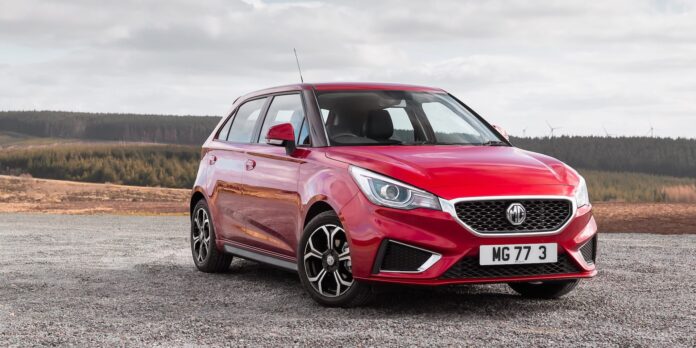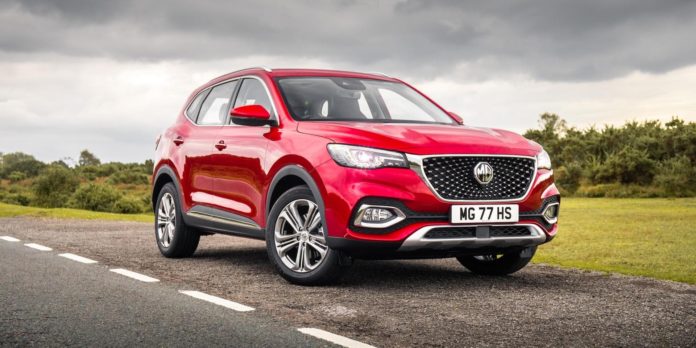The MG name is 100 years old this year, but how much connection is there between the historic British manufacturer of affordable sports cars and the brand building affordable family cars today?
The MG brand first appeared in late 1923 as an offshoot of Oxford-based car manufacturer, Morris, modifying standard Morris models for increased performance. By the end of the 1920s, MG was producing its own dedicated vehicles from its own factory in Abingdon, Oxfordshire, although still based on Morris underpinnings.
Like most of the companies in the British car industry, ownership changed hands multiple times after the Second World War. After about five decades of mismanagement, passing through British Motor Corporation (BMC), British Leyland, British Aerospace, BMW and the infamous Phoenix Consortium, what was left of the company finally collapsed in 2005.
Following a protacted and bitter episode of public wrangling over the company’s assets and the future of some 6,000 employees, the MG name and company assets were sold to a Chinese company called Nanjing Automobile Group. From this point, the company has essentially been reborn.
So who or what is MG?
The company today is owned by Chinese state-owned automotive giant SAIC Motor, which absorbed Nanjing in 2007. SAIC is China’s largest car company (although you may have never heard of it), building more than 5 million cars a year under various brand names.
Production at MG’s Longbridge factory gradually reduced under SAIC’s ownership, with the last UK-assembled car rolling off the line in 2016. Today, all MG cars are built in China, India and Thailand, although the company retains an advanced design studio in London. Research and development work continued in Longbridge for a while, but this has also been wound down in recent years.
When did MG launch (or relaunch) in the UK?
Technically, today’s MG retains an unbroken link to the original car first launched back in 1923. But it’s probably better to think of today’s company as MG 2.0, an entirely new proposition under Chinese ownership.
The company has essentially been rebuilt under SAIC over the last 15 years, and gradually taking more and more steps to become a viable mainstream brand. The last models under ‘old MG’ have all been phased out, with today’s line-up very much a reflection of ‘new MG’.
Sales have now reached the point where MG is about the tenth-largest brand in the UK by new car sales. Numbers vary each month (as of June 2023 it had dropped back to 11th behind Mercedes-Benz), but it’s likely that we’ll see MG firmly cemented in the top ten for new car sales over the next couple of years.
What models does MG have and what else is coming?
In the UK, MG currently offers five model lines – the MG 3, MG 4, MG 5, MG ZS and MG HS. However, in Asia there are plenty of other vehicles wearing MG badges that are not sold here. These are simply rebadged versions of other SAIC cars, rather than bespoke MG models.
The biggest sellers of the range are the MG ZS small SUV (available in petrol or electric versions) and the MG HS mid-size SUV (available with either petrol or plug-in hybrid power). A facelifted version of the HS is set to arrive in UK showrooms later this year.
In 2024, we should see the launch of the new MG Cyberster roadster, a small electric sports car that will be pitched as a 21st-century version of the classic MG roadsters of the 1950s and 1960s. But hopefully with better build quality and reliability…
Sometime in the next year or so, we also expect to see a replacement for the MG 3 small hatchback. This has been around for nearly a decade, and wasn’t all that good when it was first launched. The next generation of this model is likely to be a massive step forward.
Given that SAIC has plenty of different brands in its portfolio, and already sells many different cars as MGs in other Asian markets, it’s entirely possible that we’ll see some of these vehicles brought to the UK in coming years. But there’s no specific information yet, so you’ll have to stay tuned.
Where can I try an MG car?
MG has a growing network of more than 150 dealerships across the UK, so you shouldn’t have any problem finding either a showroom or a service centre.
Since 2015, MG has also held a flagship retail centre on Picadilly in London opposite Fortnum & Mason. This was previously a Lotus showroom, which MG moved into after Lotus ran out of money (again… ).
What’s particularly different and significant about this company?
MG has stolen a march on much of the European car industry with its affordable electric vehicles, which undercut rivals by thousands of pounds. The MG 4 EV, in particular, is a Volkswagen ID.3 competitor but is priced nearly £10,000 cheaper than the VW, starting at £27K.
The MG 5 EV is a mid-sized electric estate and the MG ZS EV is a small electric SUV, both of which are significantly cheaper than electric alternatives of similar size or performance. MG’s cars also come with a seven-year new car warranty, which you won’t find from many European brands.
Much to the dismay of Euro badge snobs, the Chinese car industry is significantly more advanced on electric vehicles than the European car industry, with SAIC being one of the leaders. This has helped MG to bring very keenly priced new EVs to the UK market, and it’s likely to continue for the next few years while European car makers play catch-up.
Summary
We see a fair bit of negativity towards MG on social media, based on its Chinese ownership and the fact that it no longer builds cheap and cheerful sports cars like it did back in the 1960s. But when you take off the rose-tinted spectacles, the reality is that ‘old MG’ was a chaotic, poorly managed mess for most of its history.
The brand suffered greatly under the mismanagement of British Leyland, and even BMW gave up on what was then MG Rover, considering it a basket case. Given that BMW successfully rehabilitated Mini and Rolls-Royce, as well as reviving Land Rover before selling it off to Ford, it’s pretty damning that the Germans were happy to sell it to a shady consortium after only six years for the princely sum of £10 (as well as underwriting Phoenix to the tune of almost £500 million…).
When MG finally collapsed in 2005, no-one was prepared to buy it as a going concern or protect the company’s thousands of workers in the Midlands. MG had nothing to offer other UK or European car manufacturers, and the only legitimate interest came from China. Even then, it’s likely that the only real assets of interest to Nanjing and SAIC were the MG name itself and the UK R&D facility. The production facilities and the cars themselves were essentially worthless.
Under SAIC’s ownership, MG has been steadily rebuilt to become a successful – and economically viable – mainstream car brand. Owners seem happy with satisfaction levels that are comparable to, or better than, other mainstream car brands.
In terms of safety, the latest generation of MG models (MG 4, ZS and HS) all have five-star ratings from independent safety body, Euro NCAP. That’s a much better state of affairs than fellow budget brand, Dacia. Reliability data is still patchy, but we’re not aware of any significant issues that would be worse than other mainstream car brands.
In short, if you’re looking for a new or near-new car on a budget – especially if it’s an electric car – an MG should be at the top of your list of cars to try.
You may also like:














